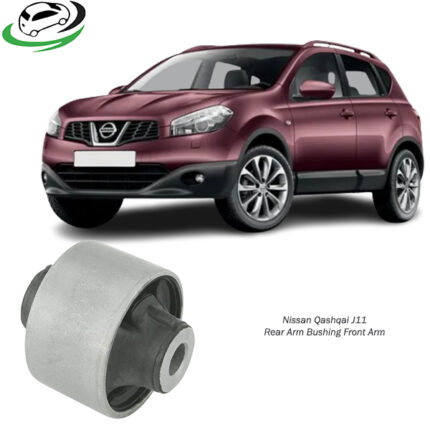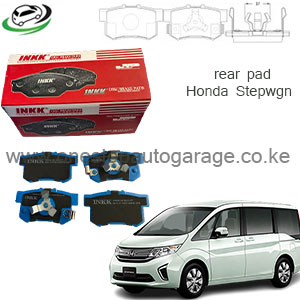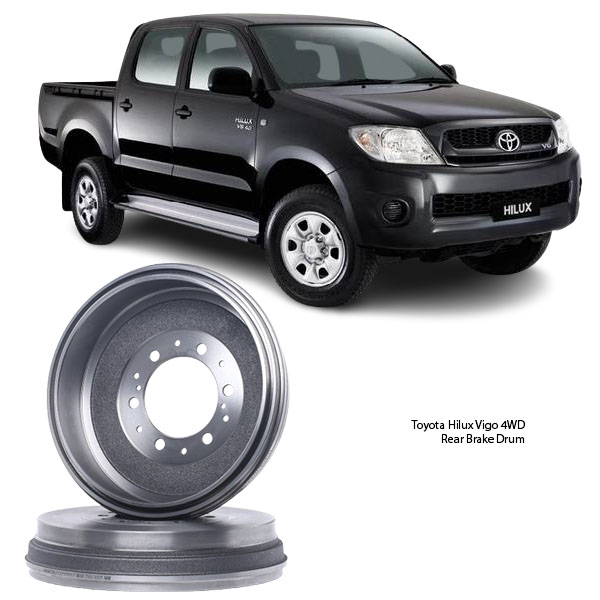-6%
Get Toyota Hilux Vigo 4WD Rear Brake Drum 42431-0K120 in Kenya
When it comes to vehicle safety, few components are as crucial as the braking system — and within that system, the rear brake drum plays a key role. While front disc brakes often steal the spotlight, drum brakes on the rear wheels continue to serve with dependable performance, especially in heavy-duty vehicles, older models, and some modern cars with rear drum setups.
Whether you’re a driver looking to understand your vehicle better or a technician aiming to guide your customers, here’s a comprehensive look at the rear brake drum, how it works, why it matters, and when it needs attention.
🚗 What is a Rear Brake Drum?
A rear brake drum is a component in a drum brake system, typically mounted on the rear wheels of a vehicle. It’s a cylindrical drum made from cast iron or steel, and it rotates along with the wheel. Inside the drum are brake shoes, which press outward against the inner surface of the drum to create friction and slow the vehicle down.
This friction generates heat, which is then dissipated by the drum. The entire process converts kinetic energy into thermal energy, slowing down or stopping the vehicle as needed.
🛠️ How Does It Work?
Here’s a breakdown of how the rear drum brake system functions:
-
Driver Applies Brake Pedal
When you press the brake pedal, hydraulic fluid flows through brake lines to a wheel cylinder located inside the brake drum. -
Wheel Cylinder Activates Brake Shoes
The hydraulic pressure pushes pistons outward in the wheel cylinder, which in turn pushes the brake shoes against the inner wall of the drum. -
Friction Slows Down Rotation
The friction between the brake shoes and the drum’s interior slows the rotation of the drum — and thus the wheel. -
Vehicle Slows or Stops
As the wheels lose momentum, the vehicle slows down smoothly and safely.
This system is simple, robust, and time-tested — ideal for the rear wheels, where braking demands are typically lower than the front.
🧱 Key Components of a Rear Drum Brake System
To understand the rear brake drum, it helps to know what it’s working with:
-
Brake Drum – The rotating drum attached to the wheel hub.
-
Brake Shoes – Curved friction material that presses against the drum.
-
Wheel Cylinder – Hydraulic actuator that pushes the shoes outward.
-
Return Springs – Pull the brake shoes back after braking.
-
Backing Plate – Supports the drum brake assembly.
-
Adjuster Mechanism – Keeps the shoes properly spaced as they wear.
Every part plays a role, but the brake drum is where all the action (and friction) happens.
⚙️ Why Use Drum Brakes on the Rear?
You might wonder why many vehicles still use drum brakes in the back. Here are a few reasons:
-
Cost-Effective: Drum brakes are generally less expensive to manufacture and maintain than disc brakes.
-
Integrated Parking Brake: Drum brakes easily accommodate mechanical parking brake systems.
-
Low Braking Demand: The front brakes do about 70% of the braking work. Rear drums handle the rest efficiently.
-
Durability: Drum brakes are enclosed, protecting them from dirt, water, and debris.
While disc brakes offer superior performance under heavy loads and high heat, rear drums still hold their own, especially for everyday use.
💡 Signs Your Rear Brake Drums Need Attention
Brake drums wear over time — just like any friction-based component. Knowing when to inspect or replace them is key to maintaining safety and performance.
Watch out for these signs:
-
🔊 Squealing or grinding noises from the rear wheels
-
🚗 Soft or spongy brake pedal
-
⚠️ Reduced braking efficiency or longer stopping distance
-
🔄 Pulling to one side when braking
-
💨 Burning smell or overheating during braking
-
🌀 Pulsation or vibration in the brake pedal
In many cases, the drum can be resurfaced (machined smooth), but if it’s out of spec, warped, or deeply scored, replacement is the safest option.
🔍 Inspection & Maintenance Tips
Proper care and regular checks can extend the life of your rear brake drums:
-
🔧 Inspect Every 15,000–20,000 km – Especially if you drive in hilly areas or carry heavy loads.
-
🧼 Clean Out Dust & Debris – Use brake cleaner to remove buildup inside the drum.
-
📏 Check Shoe Thickness & Drum Diameter – Replace worn shoes and drums beyond their service limits.
-
🧰 Lubricate Moving Parts – Like the adjusters and shoe contact points, using proper brake grease.
-
🔁 Always Replace in Pairs – Never replace just one drum or shoe; always do both sides for even braking.
🏁 Benefits of a Healthy Rear Brake Drum
When your rear brake drums are in good condition, you’ll notice:
-
🛑 Smooth and responsive braking
-
🚙 Stable stops without pulling or swerving
-
💨 Quieter operation
-
🔁 Longer lifespan for brake shoes and other components
-
🧘 Peace of mind knowing your brakes won’t let you down
It’s a small investment with a huge impact on safety and performance.
💬 Fun Fact
Some high-performance and electric vehicles are now reintroducing drum brakes in certain rear applications — not for cost, but for their effectiveness in energy regeneration and parking brake integration. So, drum brakes are not just surviving — they’re adapting.
🧩 Compatibility & Sizing
Rear brake drums come in various sizes and specifications, depending on the vehicle make and model. Always ensure:
-
✅ Correct drum diameter and width
-
✅ Matching with brake shoe type and size
-
✅ Proper fit on the wheel hub and axle
-
✅ Suitable for the vehicle’s load and braking system
When in doubt, consult your technician or check the OEM part number to avoid mismatches.
🛒 Ready for Replacement?
Whether you’re replacing a worn drum or upgrading to a quality aftermarket part, always go for trusted brands that guarantee:
-
✅ High-grade cast iron or steel construction
-
✅ Precise machining for a perfect fit
-
✅ Heat and wear resistance
-
✅ Long-lasting, vibration-free performance
At Onestop Garage & Auto Spares, we stock high-quality rear brake drums for a wide range of vehicles — available for service or delivery countrywide. 🛠️
🏁 Final Word
The rear brake drum may not be the flashiest part on your vehicle, but its role is critical to safe, stable, and reliable braking. Keeping it in top shape means you’re protecting more than just your car — you’re protecting your passengers, your cargo, and everyone else on the road.
So next time you’re thinking about brake service, don’t forget the rear end of the system. Replace worn drums, fit the right parts, and trust professionals who understand the job.
Because when it comes to stopping power, every part matters.
Follow us on Facebook for more parts.



